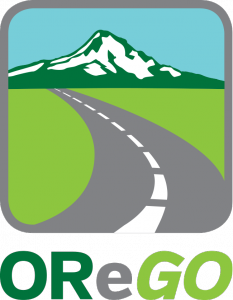Contributed by Jason Magalen, P.E., M.ASCE, Oregon Section ASCE President 2014-2015
 Oregon has a history of being a trailblazer when it comes to funding the cost of surface transportation. It was the first state to enact a fuel tax back in 1919 and didn’t stop there. Over the decades the state has completed a number of studies to determine the impact of vehicles on its roads. In 2001, the legislature formed the “Road User Fee Task Force” to explore innovative ways of meeting the maintenance and improvement need of the state’s transportation system. It was this panel that leads us today’s launch of the OReGO program.
Oregon has a history of being a trailblazer when it comes to funding the cost of surface transportation. It was the first state to enact a fuel tax back in 1919 and didn’t stop there. Over the decades the state has completed a number of studies to determine the impact of vehicles on its roads. In 2001, the legislature formed the “Road User Fee Task Force” to explore innovative ways of meeting the maintenance and improvement need of the state’s transportation system. It was this panel that leads us today’s launch of the OReGO program.
OReGO is a first of its kind program through which volunteers will pay a road usage charge for the amount of miles they drive, instead of the standard fuel tax. How does this work? Well, the current usage charge is set at 1.5-cents per mile. Participants will receive a credit on their tax bill to offset the fuel taxes paid at the pump. If you drive an electric vehicle you’ll simply pay the per mile usage charge without the fuel tax offset.
The program rolls begins accepting volunteer applications (up to 5,000 participants) beginning today, July 1, 2015, and I’m proud to be one of them. My decision to participate was based on personal and professional reasons: On a personal level, I feel we all need to contribute to the maintenance and repair of the property we use. On a professional level, civil engineers need to be advocates for ensuring our infrastructure maintenance and repair is adequately funded into the future. You can check out how the pilot program has impacted others who have opted in, including the firsthand account of a state legislator.
Participation is as simple as a completing an interest survey and selecting a service provider to track your mileage. When you receive your device simply plug it in and drive! The device is attached to a credit card and will bill you based on the number of miles you drove during a given period and, of course, receive a credit for any fuel taxes paid during the same period. I’ll be plugging mine in today.
If your immediate thought is “I don’t want the state to track when and where I’m driving,” I had similar apprehensions. There are several available options, though, and volunteers have the ability to select the device, reporting/monitoring, and payment program that fits his/her needs and desired privacy level. He can opt to have “GPS enabled” or non-GPS devices record his miles. The advantage of a “GPS enabled” device is that she will only be charged for miles traveled within the State of Oregon’s borders.
Many of the current comparison models contrast a fuel efficient hybrid with a heavy duty pick-up truck using the average mileage recorded by Oregonians like you and me. Under this model the hybrid driver would pay a little more in user fees but, reap savings in overall fuel costs while the pick-up truck driver would see benefits on both sides via the fuel tax credit applied toward user fees. If you think you might be able to put some cash back in your pocket while still funding our roads check out the monthly cost calculator.
All net revenue generated from road usage fees will be deposited directly into the State Highway Fund. The State Highway Fund is currently distributed 50 percent to the state, 30 percent to counties and 20 percent to cities. It is important to remember that all vehicles are treated the same under the OReGO program. With the exception of a credit received by vehicles that fuel up, the more vehicles that participate in OReGO the more opportunities for Oregonians to share the cost of using our roads.
